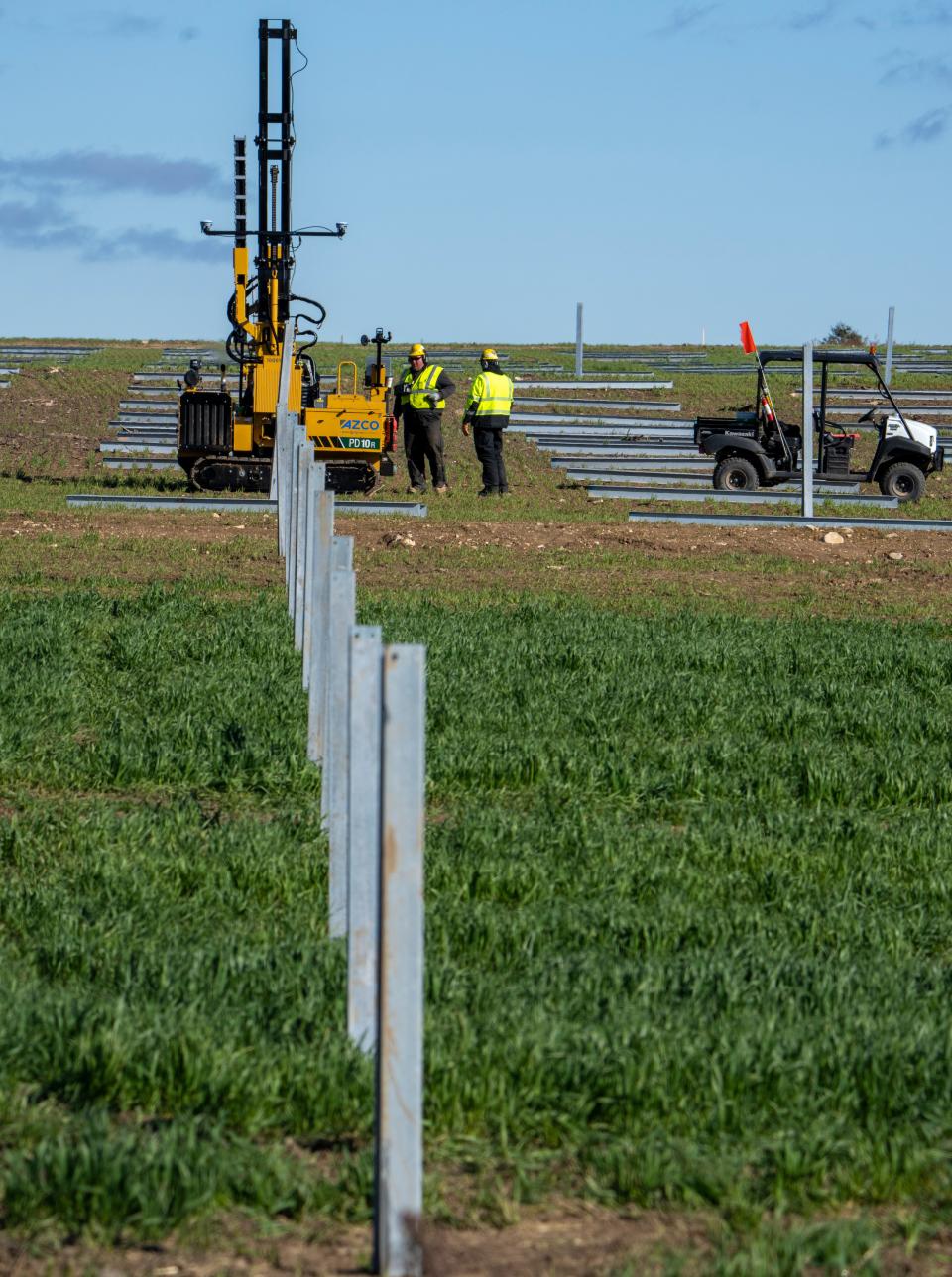Solar farms or fields of corn grown to make ethanol. Which is the best way to use farm land?
Opponents of large solar installations frequently argue that solar farms will take away valuable food production when farmers decide to stop tilling and instead lease their land to a power company.
A new study released by Clean Wisconsin seeks to diffuse those arguments, specifically looking at the tradeoffs involved in converting land where corn is grown for ethanol production to electricity production.
It's key finding is that a solar farm can produce 100 times the energy of a comparably sized field planted with corn for ethanol, after all energy inputs are included. Those inputs include the cost of building and installing solar panels, and growing, harvesting, transportation and processing costs for ethanol.
It's not that solar farms are always replacing fields where corn is being grown for ethanol. Rather, the study focused on ethanol production because it represents 1 million acres in Wisconsin that already are producing power rather than food, said Paul Mathewson, science program director for Clean Wisconsin.
"We already use farm land in Wisconsin to produce energy, which is growing corn for ethanol. So we just wanted to push back on that messaging that solar panels and solar facilities are always taking food out of production and show that a quarter of the corn that we're growing in Wisconsin is already going to energy."
The important takeaway, he said, is that solar farms can produce far more energy on significantly less land and at a lower cost than is produced by growing corn for fuel.
A previous Clean Wisconsin report on the clean energy infrastructure that would be needed to reach the state's goal of net-zero carbon emission by 2050 estimated that 31 gigawatts of solar production will be needed to meet that goal. About 250,000 acres would be needed to produce that much energy, about one-third of the land currently used to grow corn for ethanol, according to the new report.
RELATED: WEC Energy Group will spend $360 million to own 80% of a huge Illinois solar farm

Why solar leases work for some farmers
John Butterbrodt, a third-generation farmer near Beaver Dam made that decision when he agreed to lease 196 acres to Alliant Energy for its Beaver Dam Solar Project.
Butterbrodt, who is in his 90s, had previously leased his land to other farmers who grew corn for ethanol as well as other crops. He said the 30-year lease provides economic stability and a guaranteed source of income for his children, all of whom have left for non-farm careers. And, he said, it removes the headache of having to negotiate annual leases.
Butterbrodt said he's a shareholder in an ethanol plant in Friesland and continues to support ethanol and growing corn to produce it. But, he said, he, his brother and a neigbor each decided the economics were better to lease land to Alliant for the 350-acre solar farm that is expected to become operational later this year.
Neither he nor Alliant would discuss the terms of the lease.
"I'll only say that the income on a rental basis is about double what you can normally get for growing corn for ethanol," he said.
Annual leases with utilities and private companies range from under $500 an acre to more than $1,000, according to Purdue University's AG Economy Barometer. A 2021 survey by the university reported 29% of farmers had discussed leases with solar developers, yet only 2.6% had signed a lease.
Butterbrodt said he "went public locally" to explain his decision and try to offset other residents' concerns about the loss of agricultural land.
"There's people who say, 'Oh, we need that for food production,' and I point out that, right here in Dodge County, the federal government is paying landowners not to crop their lands," he said.
Ethanol vs. corn: More power from fewer acres
There's no good apples-to-apples comparison between ethanol and solar power.
Their uses are dramatically different: Solar power directly produces electricity while ethanol is used as a fuel additive to reduce burning of fossil fuels in cars.
One way of measuring the amount of energy that can be produced on an acre of land is to look at the number of miles that internal-combustion and electric vehicles can be driven based on the energy produced on the same number of acres.
The study estimates that Wisconsin's 1 million acres of corn produces enough energy to power the annual travel of 700,000 internal-combustion passenger cars or 2 million electric vehicles. Solar panels on that acreage could power the annual travel of 60 million electric vehicles, the study states.
If the ethanol is converted to electricity to power electric vehicles, corn ethanol would require 32 times the amount of land to power the same number of vehicle miles, the study states.
What's important, Mathewson said, is that the study highlights how little land — about 3% of the state's agricultural land — would be needed to meet the state's future solar energy needs.
"A quarter of the corn that we're growing in Wisconsin is already going to energy, and when you compare the energy efficiencies of the two, we could be producing much more energy on the same amount of land," he said.
Our subscribers make this reporting possible. Please consider supporting local journalism by subscribing to the Journal Sentinel at jsonline.com/deal.
DOWNLOAD THE APP: Get the latest news, sports and more
This article originally appeared on Milwaukee Journal Sentinel: Farm land used for power has minimal impact on Wisconsin's food production, study finds

